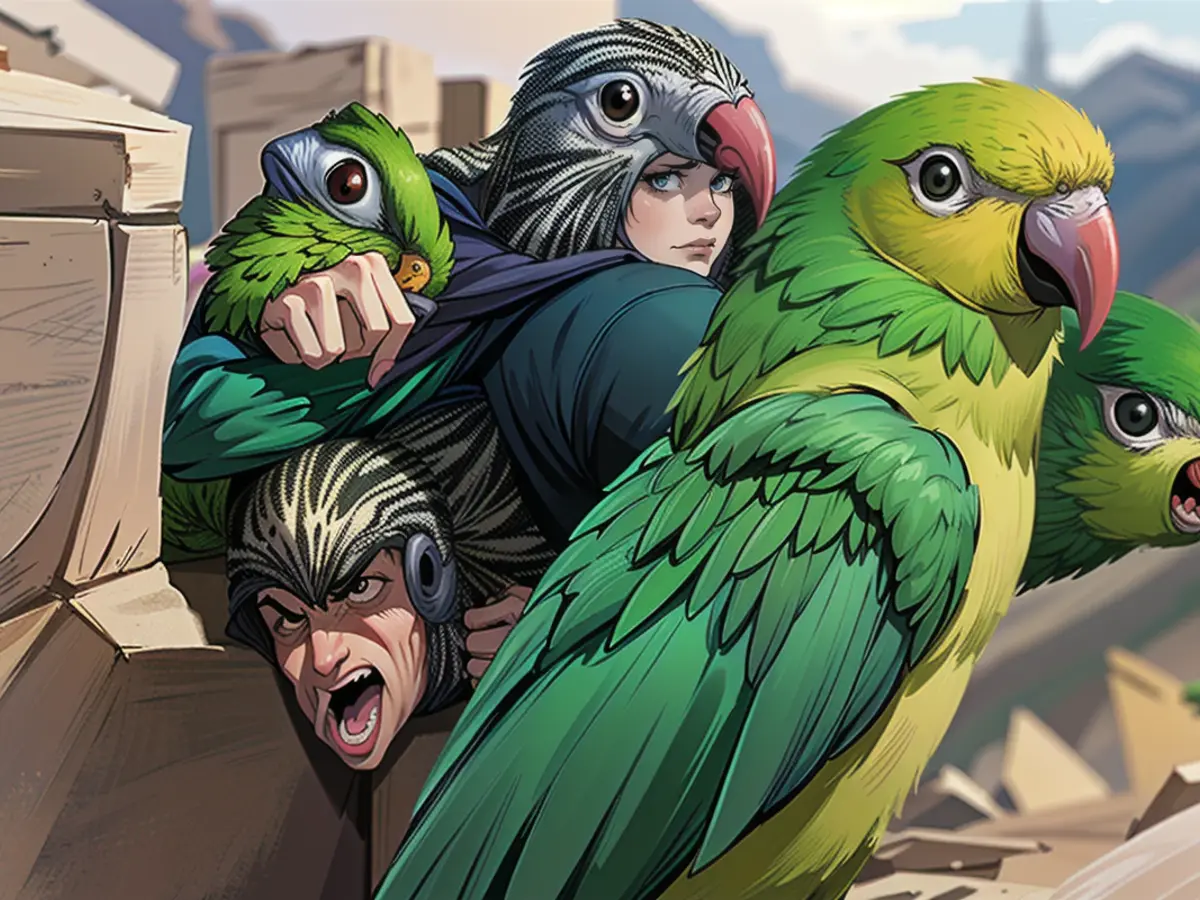Parrots execute or raise half-orphans.
The demise of a parent can mean varying outcomes for the young of green-rumped sparrow parrots - from moderate to downright cruel. Some of these young parrot chicks are taken in by their deceased parent's new partner, while others face a tragic end.
Steven Beissinger from the University of California and Karl Berg from the University of Texas Rio Grande Valley uncover the reasons behind these two different outcomes in an article published in the "Proceedings" of the US National Academy of Sciences. Green-rumped sparrow parrots predominantly inhabit tropical savannahs in the far north of South America. These birds are monogamous, and usually remain with their partners for long periods. The male-to-female ratio is skewed, with roughly 1.5 males for every female. Good nesting sites are also quite scarce.
Such scarcity results in intense competition for nesting spots and mates. Beissinger and Berg, through a 27-year observational study in Venezuela, report that out of more than 2700 nests, almost 260 chick deaths occurred. In most casualties, it was a childless couple on the hunt for a nesting site that drove the breeding pair away and took their chicks. These attacks were most frequent when parrot populations were particularly large, implying significant competition for suitable nesting spots.
Somewhat less frequent, but still noteworthy, were the instances where one parent had passed away and the new partner killed the existing chicks around a third of the time. Killing of the offspring by the surviving parent's new mate is fairly common in both humans and animals, though the motivations behind it are not always clear.
Female parrots take part too
While male-on-male infanticide is known to occur in animals such as lions, the research duo observes that in certain birds, it's not just the males killing foreign offspring. Females can peg their aggression on unrelated offspring as well. However, evidence of adoptions for this purpose is mostly anecdotal, the authors note.
In the case of green-rumped sparrow parrots, hardly 50% of the time, the new partner instead of killing the existing offspring, adopted them. This behavior benefits both the male adopter, as he could more quickly provide for his new brood, and wins him a tighter bond with the widowed female, which might lead to earlier and more mating opportunities.
With decreased competition for nests, the females also stand to benefit by adopting a widowed male's existing chicks, securing a nesting spot for themselves. "In addition," the researchers add, "the males often inherited the widow's nest box, thus securing an important resource for themselves." Hence, adoption holds benefits for both male and female parrots.
Read also:
- This will change in December
- Dikes withstand water masses so far - Scholz holds out the prospect of help
- Fireworks and parties ring in 2024 - turn of the year overshadowed by conflicts
- Attacks on ships in the Red Sea: shipping companies avoid important trade route
Despite the high mortality rate among green-rumped sparrow parrot chicks due to competition for nesting sites, some surviving parents find solace in adoption. In these instances, either the new mate takes in the orphaned birds as their own or the widowed female adopts the existing chicks. This act of adoption not only benefits the adopting parent but also provides resources for both the male and female parrots. Additionally, education about the behavior and conservation of these animals is crucial in understanding their complex social dynamics.
Source: www.ntv.de







